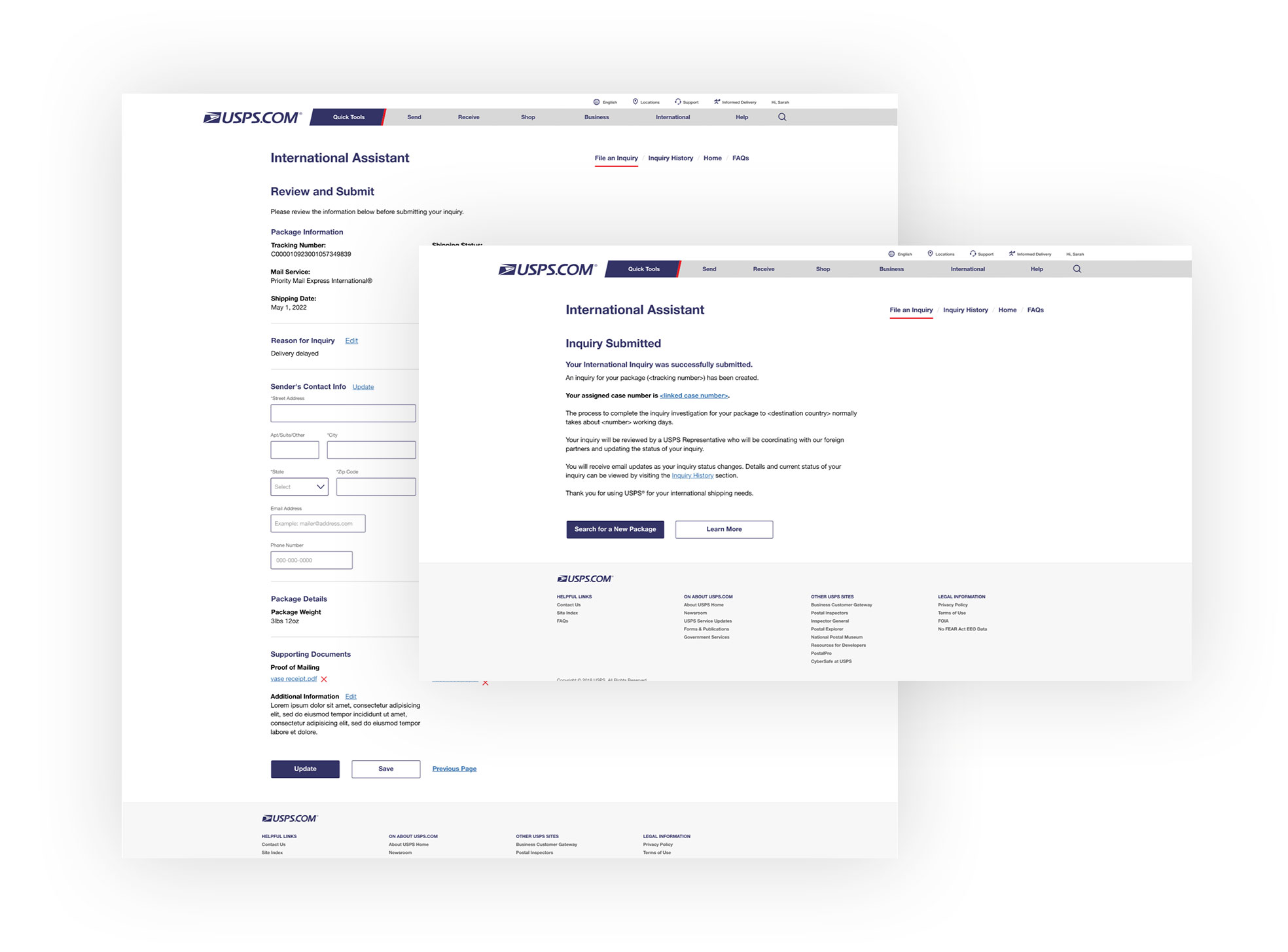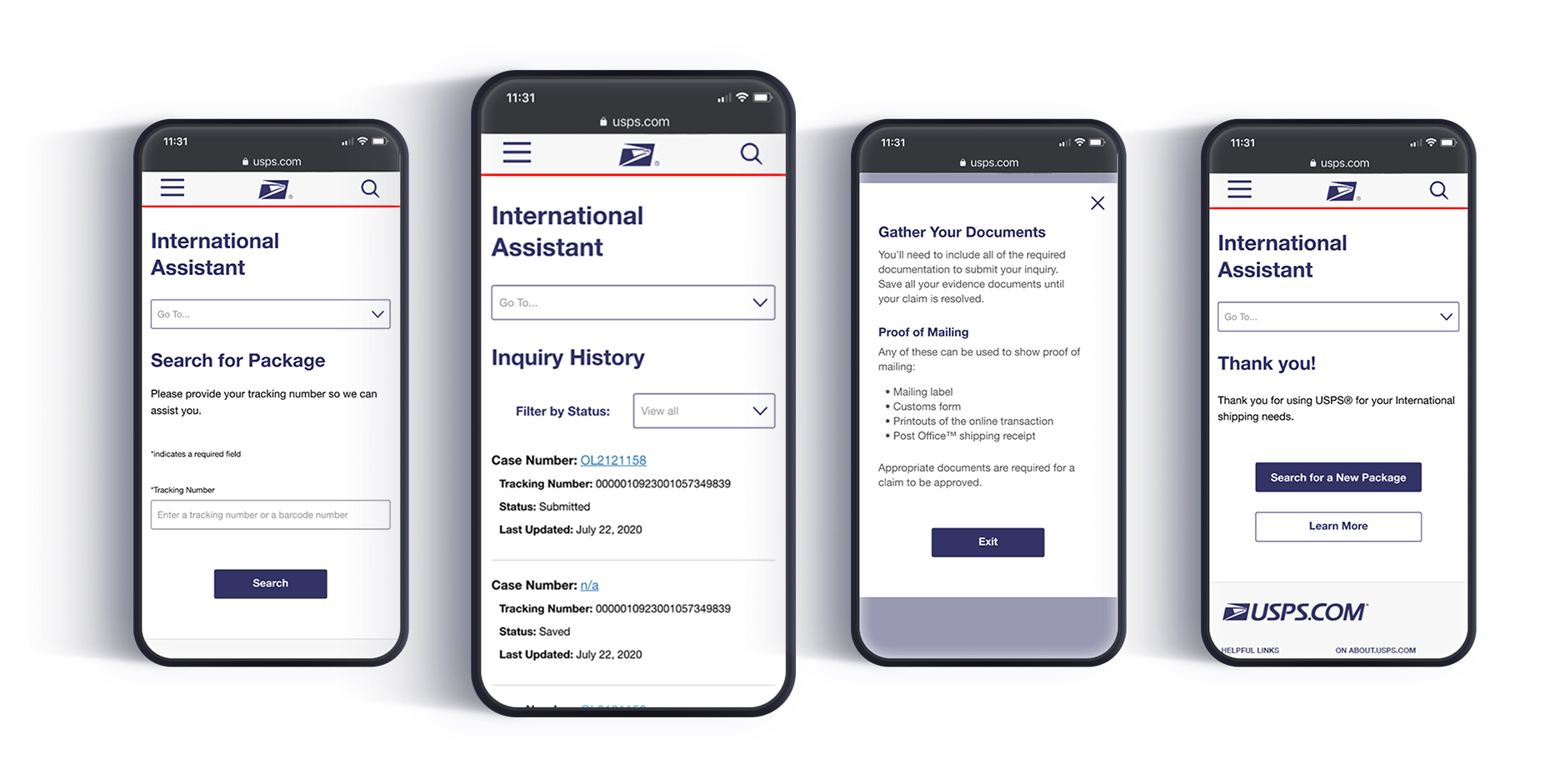Background
The United States Postal Service (USPS) plays a vital role in facilitating domestic and international commerce by offering reliable, affordable, and universal mail and shipping services. As part of its international operations, USPS processes a significant volume of user-generated inquiries and claims related to international mail shipments. The agency managed 500,000+ international shipment inquiries and claims, submitted either through a Customer Care Center or via a self-service online claims filing tool. While the online system was designed to alleviate pressure on customer support resources, most users continued to rely on phone-based support, contributing to increased operational costs and a negative impact on overall customer experience metrics. .

The Challenge
Despite the availability of a self-service online tool, nearly two-thirds of all international claims and inquiries were being handled by call center agents, significantly increasing the operational burden on USPS and impacting the organization’s ability to optimize customer experience (CX).
This heavy reliance on live customer support not only elevated operating costs but also limited the scalability and efficiency of the international claims resolution process. Recognizing these limitations, USPS sought to reimagine its online claims filing experience to increase user adoption, improve digital CX, and reduce dependency on phone-based support.
To address these issues, USPS contracted with OPTiMO to redesign and simplify the current online international claims filing tool with a clear focus on usability, accessibility, and cost-efficiency.
The Solution
OPTiMO executed a human-centered, iterative design approach, aligning with USPS objectives through ten structured two-week Agile sprints. The core deliverable was a finalized requirements package that included feature-level user stories, design documentation, and high-fidelity clickable prototypes developed in Adobe XD.
Key elements of the solution included:
- Stakeholder engagement: Requirements elicitation sessions with USPS business users helped ensure alignment with current operational pain points, while design thinking workshops fostered creative problem-solving
- User-centered design artifacts: OPTiMO leveraged established USPS personas, developed detailed journey maps, and explored user scenarios to validate user needs and challenges throughout the process
- UX best practices: The new tool emphasized clarity, ease-of-use, and transparency by simplifying form inputs, reducing unnecessary steps, and minimizing the need for manual entry through backend system integrations
- Accessibility and branding: The project complied fully with 508 accessibility standards and the USPS Digital Style Guide, ensuring visual consistency and inclusiveness across all user interactions
The result was an intuitive and intelligent online experience that dynamically adapted to the user’s specific case, reducing user friction and improving satisfaction.

The Impact:
The redesigned International Assistant tool marked a transformative shift in how USPS manages international claims and inquiries. OPTiMO’s solution integrated backend data intelligence with a simplified user interface to streamline the customer experience. By asking users only the minimum required questions—tailored to the data already available—OPTiMO significantly reduced the level of effort required by the user.
Key outcomes include:
- A smarter digital experience that predicts the user’s situation based on available shipment data and minimal qualifying questions
- A more transparent and seamless online filing process, increasing customer confidence and satisfaction
- A projected reduction in call center-related operating costs of more than $800,000 annually, expected within 18 months of full tool deployment
- Strengthened USPS capacity to scale its international customer support operations while enhancing service quality
By elevating the self-service capabilities of the USPS, OPTiMO delivered value not just through innovation but through tangible operational savings and measurable customer experience improvements, reinforcing the Postal Service’s role as a modern, customer-centric organization.